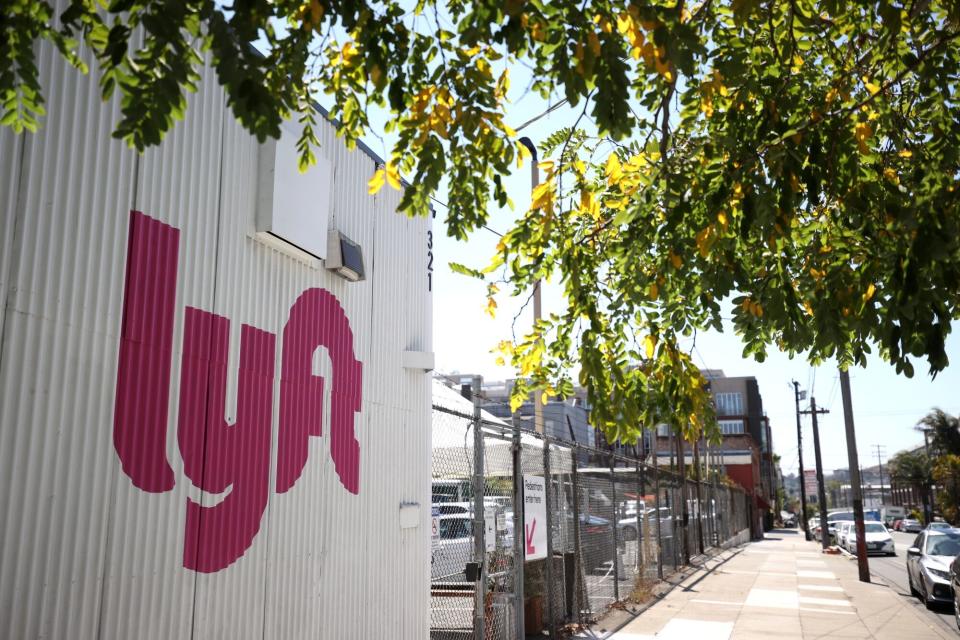Lyft's Green Efforts Take a Backseat in Push to Keep Up With Uber

(Bloomberg) -- Lyft Inc.’s founding mission hinged on making transportation more environmentally friendly. But the ride-hailing company’s sustainability efforts have been dealt a setback as new Chief Executive Officer David Risher prioritizes slashing costs in a bid to keep up with Uber Technologies Inc.
Most Read from Bloomberg
Elizabeth Holmes Objects to $250-a-Month Victim Payments After Prison
Trump Urges Prosecutors to Drop Case, Offers Defense Preview
Within a week of Risher’s arrival in April, he let go of about a quarter of the staff, including head of sustainability Paul Augustine. A month later, Lyft said it was officially discontinuing pooled rides, one of its hallmark features, opting to focus on making rides cheaper with other features instead.
The paring back of Lyft’s green efforts coincides with an even bigger push toward sustainability by Uber, which pledged on Thursday to eliminate emissions and “unnecessary” plastic waste from its delivery business by 2040, bringing it in line with its ride-hailing arm.
For years, Lyft was considered the greener, more socially conscious alternative to its crosstown rival.
When co-founders Logan Green and John Zimmer pioneered the concept of shared rides in 2014 the service was key to their strategy to take more cars off the road and reduce carbon emissions. Uber quickly followed with Uber Pool and soon the carpool services became a defining feature of the ride-hailing industry. In June 2020, Lyft was the first ride-hailing company to commit to reaching zero emissions with a 100% electric fleet by 2030. Uber followed with its own pledge a few months later.
But the recent upheaval at Lyft threatens to undercut its green goals.
Augustine, among the roughly 1,000 employees who were let go in April, was the architect of Lyft’s strategy to transition to electric vehicles, which included deals for EV rentals, charging infrastructure and driver incentives. His departure was unexpected, according to people familiar with the matter, and came just a week after Augustine met with lawmakers in Washington about climate policy initiatives. His team was effectively disbanded thereafter.
Augustine posted his departure on his LinkedIn page this week. He declined to comment on the terms of his exit. A Lyft spokesman said the company doesn’t plan to replace Augustine’s role but will distribute his responsibilities across other teams.
Risher took over Lyft as the company is struggling to reclaim market share against Uber, which has recovered and even thrived since the pandemic. Lyft meanwhile was hit hard by the driver shortage as the economy reopened and has had to keep spending in check to stay competitive with Uber on pricing. After less than two months at the helm, Risher slashed headcount, rolled back Lyft’s fully flexible work policy, and hired a new chief financial officer. Since his appointment, Green and Zimmer have stepped away from daily operations but remain on Lyft’s board.
Internally, the co-founders were known for being steadfast evangelists of the importance of reaching climate goals — at times to a fault — even as they fielded financial challenges during the pandemic, four current and former employees said, asking to remain anonymous discussing internal company matters. With Zimmer and Green taking a back seat and Augustine’s role eliminated, it’s not clear who will shepherd Lyft to its goal to become 100% electric. Some employees doubt the company will be able to follow through on its net zero pledge.
“Our team is continuing the work to help pass smart policies in cities and states across the country that will enable us to achieve 100% EVs on the platform by the end of 2030,” a Lyft spokesman said in a statement. The company pointed to initiatives including expanding its “green mode” feature, a sustainability dashboard for corporate partners, and a suite of EV rental partnerships. Lyft declined to specify what proportion of its fleet is electric but said the number of monthly active EVs on the platform nearly tripled in the past year.
In an interview with Bloomberg Quicktake, Uber CEO Dara Khosrowshahi said the company plans to bear the financial cost of getting drivers to make the switch to EVs. “We’ve got to make it economically sensible for drivers.” Uber does not disclose the proportion of vehicles that are electric, but Khosrowshahi said 5% of the miles driven globally on the platform are in EVs.
Uber and Lyft’s climate goals are more than good corporate citizenship; they have a regulatory imperative, too. In California, the companies must ensure that at least 90% of all the miles driven in the state are done by electric vehicles by 2030.
Most Read from Bloomberg Businessweek
A Saudi Airline Embraces Luxury to End Emirates and Qatar’s Gulf Dominance
Layoffs and AI Are Changing Tech’s Once-Invincible Job Market
Spotify Takes a Sharp Turn With Its $1 Billion Podcast Division
Berlusconi’s Death Puts Italy’s Future in the Hands of Two Women
©2023 Bloomberg L.P.

 Yahoo Finance
Yahoo Finance 